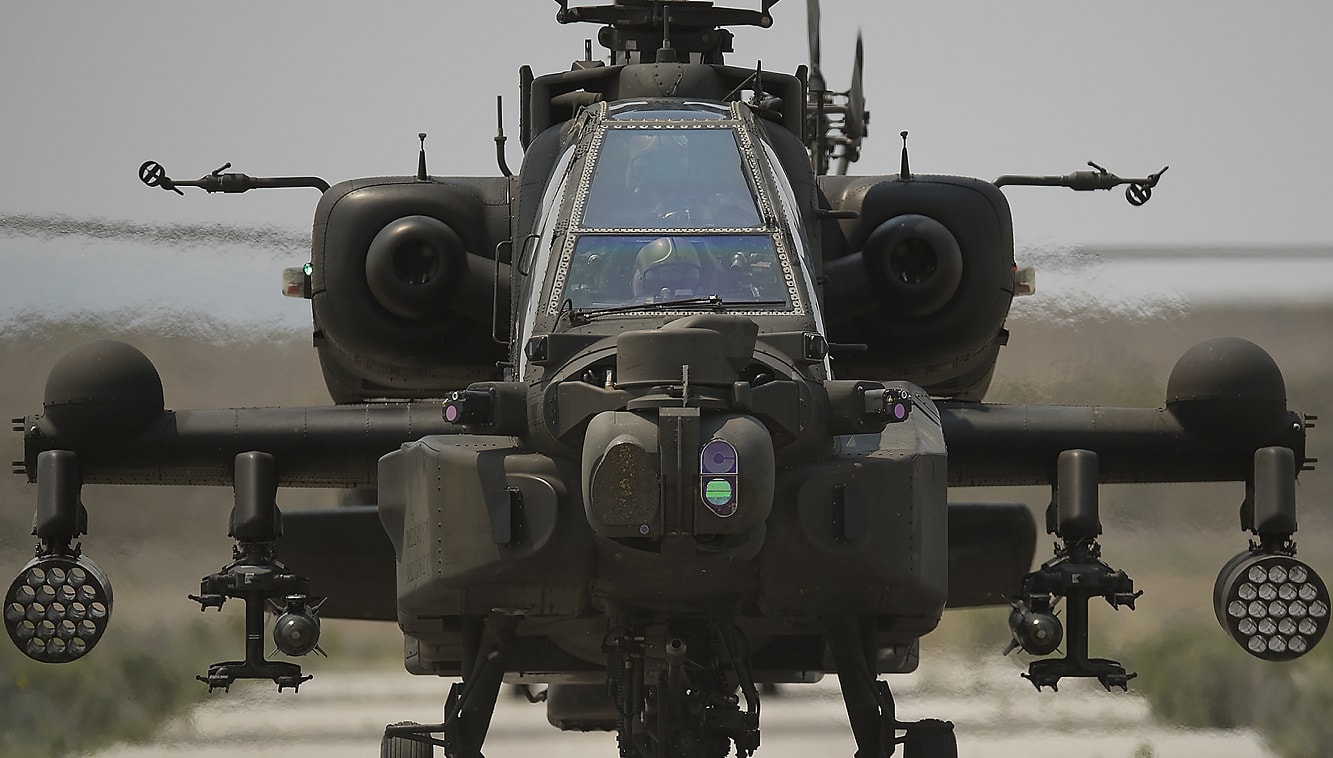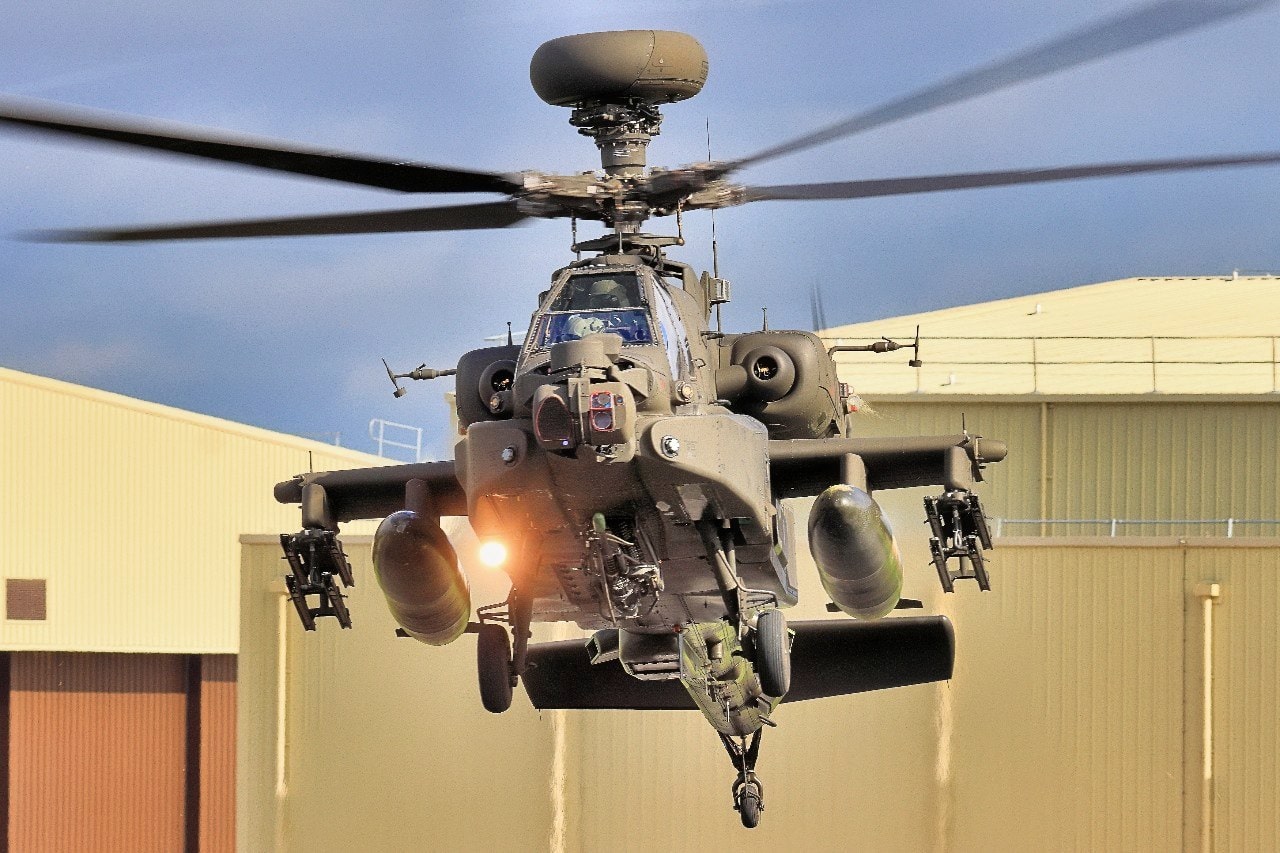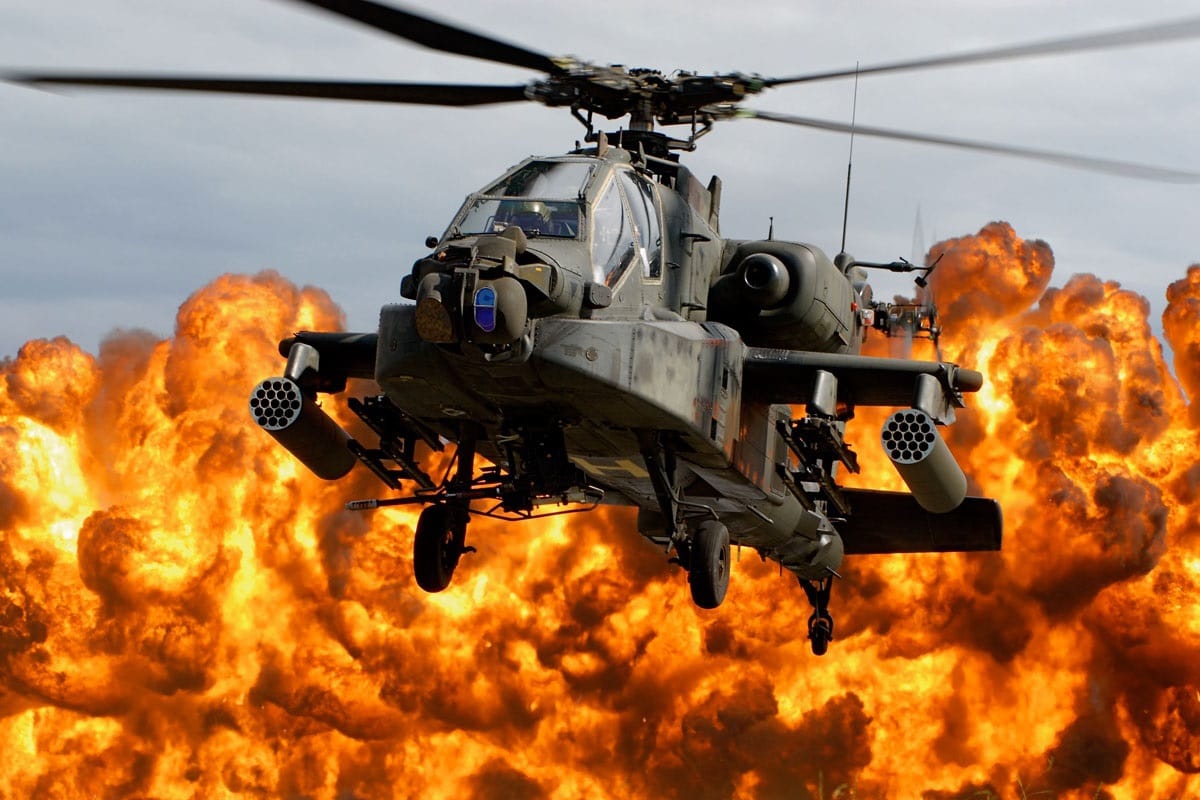Key Points and Summary: The AH-64E Apache Guardian is the latest evolution of the legendary attack helicopter, designed for modern battlefields. Featuring upgraded General Electric T-901 engines, open-architecture avionics, and improved survivability, the AH-64E restores power margins lost over decades of added weight.
-With enhanced navigation, the Link-16 data link, and fire-control radar, it can dominate the battlefield like never before. Its cutting-edge weapons, including the Hellfire missile, make it the premier tank killer.
-Nations like the U.S. and Poland are investing in the Apache to bolster their forces, ensuring air superiority in the face of evolving threats.
What Makes the AH-64E Apache Guardian Attack Helicopter Special
The AH-64E attack helicopter is the latest and most modern version of the Boeing AH-64 Apache—also known as Apache Guardian. Before being dubbed the Apache-E, this newest version was, until 2012, designated as the AH-64D Block III. This was the year when a campaign to sell the latest version to Poland swung into high gear, prompting the designation change.
Boeing representatives in Warsaw, who were responsible for the marketing effort at the time, explained one of the main thrusts of selling the aircraft in the front-line NATO nation. It all comes down to “just how effective the Apache is at performing the mission for the Poles and others in the Central and Eastern European (CEE) region,” said one of the program managers.
“There are any number of US weapon systems that were originally designed for our armed forces that can then be sold to export customers to carry out missions that may or may not have been the primary design requirement when that weapon was first developed,” he explained. “We Boeing—and the American aerospace and defense sector in general—are about as good as it gets in ‘tailoring’ one of our weapons platforms to fill the need of an export customer.”
“But in the case of the Apache helicopter there is no need to make modifications or alter design features,” he continued. “The Apache was specifically developed to get up in the air and support ground operations in a combined arms-type formation. And it was designed to do that right here where we are in Central Europe. Its mission was to fly low and slow and use the many high-technology weapons on board to kill enemy tanks, which is exactly the Polish military requirement.”
Design Improvements
The latest AH-64E variant features numerous improvements and upgrades to the base design, beginning with the original AH-64A and all successive variants. One of the most dramatic improvements involves the integration of more powerful engines, upgraded transmissions, and other improvements.
The Apache “E,” or the aircraft’s 6.5 model version, incorporates an improved General Electric T-901 engine with increased performance and the newly designed gearbox and new rotor blades. One of many benefits to this improved engine is an increase in the helicopter’s range and mission time. It provides 50 percent more power, 25 percent better specific fuel consumption, and reduced life cycle costs. This same T901 engine will also power the US Army’s Future Attack Reconnaissance Aircraft (FARA).
Part of the rationale for the new engine was that the current Apache and Black Hawk helicopters must perform missions in higher and at hotter conditions than they were initially designed to operate in. This has led to the need for increased power over the previous GE T700 engine, hence the new engine in the E model. Under the Army’s Improved Turbine Engine Program (ITEP) the plan is to re-engine over 1,300 Sikorsky UH-60 Black Hawk and more than 600 AH-64 Apache with the improved engine.
“An unfortunate aspect of any aircraft that stays in production for one iteration and variant after another after another is that the aircraft gets progressively heavier,” said the Boeing representative. “One of the other overall big pluses with this new engine and the other enhancements is that it restores the original power margins to the Apache—as it was with the original A-model versions, which is like night and day to the pilots.”
Electronics and Weapons
The other advancements over the previous versions of the Apache are an enhanced navigation and attack planning module, plus an improved Link-16 data link protocol. The avionics and other onboard systems for the helicopter are all now open-architecture which should make any future upgrades a “plug and play” process.
Besides these performance enhancements and many system upgrades, the AH-64E permits joint digital operability and improved survivability, which the designers describe as “cognitive decision aiding.” Due to the ease of interface with the new onboard systems, the aircraft features reduced operating and support costs, according to some of the same Boeing representatives.

The second AH-64 Apache rolls onto the taxiway and to the takeoff pad.
The Idaho Army National Guard’s Orchard Combat Training Center was host to elements of the Republic of Singapore Air Force during July. Based in Arizona, The Singapore contingent operates eight AH-64 Apache Helicopters as part of the Peace Vanguard Task Force.
The Apache is an attack helicopter with a tandem cockpit for a crew of two. It features a nose-mounted sensor for target acquisition and night vision systems. It is armed with a 30 mm M230 chain gun. It also features four hardpoints mounted on stub-wing pylons for carrying armament, typically a mixture of AGM-114 Hellfire missiles and Hydra 70 rocket pods. The Apache’s first flight took place in 1975 and was formally introduced into the U.S. Army in 1986.
In the past few years, the AH-64E Apache has been selected and is being delivered to the US Army. Several export customers have also procured it.
Partner efforts on the platform include:
-The AH-64E Longbow manufacturing effort which is part of the Longbow Limited Liability Co. (LBL) joint venture between Northrop Grumman Corp. and Lockheed Martin.
-Lockheed Martin are also the supplier for the Modernized-Radar Frequency Interferometers (MRFI) and the Hellfire missile, which is a full-spectrum fire-and-forget weapon.

AH-64E Guardian.
-Northrop Grumman provides the AN/APG-78 millimeter-wave fire-control radar. This combination of the attack fire-control radar, frequency interferometer, and advanced navigation and communications avionics provides for increased situational awareness. and survivability, according to Army officials who have also been interviewed on the program.
-Lastly, there are Lockheed Martin Apache Arrowhead Modernized Target Acquisition Designation Sight (M-TADS) and Pilot Night Vision Sensors (PNVS) systems.
About the Author: Robert E. Johnson
Reuben F. Johnson is a survivor of the February 2022 Russian invasion of Ukraine and is now an Expert on Foreign Military Affairs with the Fundacja im. Kazimierza Pułaskiego in Warsaw. He has been a consultant to the Pentagon, several NATO governments and the Australian government in the fields of defense technology and weapon systems design. Over the past 30 years he has resided in and reported from Russia, Ukraine, Poland, Brazil, the People’s Republic of China and Australia.

